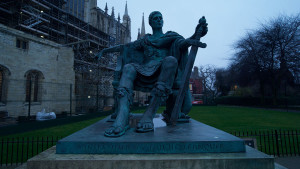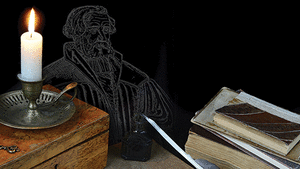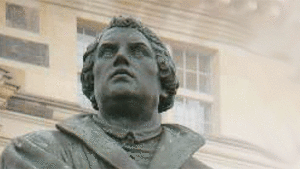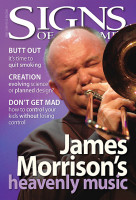Equals in courage and zeal, these two leaders of the Reformation still had their differences. Robert Wearner looks at the lives, times and legacy of Zwingli and Luther.
For Christians, every Bible truth they hold dear has been handed to them from a previous generation of men and women. Christ first, then the apostles interpreted the messages of the Old Testament prophets, adding their own inspired insights, observation and experiences to the canon. During the centuries that followed their passing, many of these biblical doctrines became lost in the dust heap of tradition. Although a few isolated groups clung to the basic truths of salvation, it took Martin Luther and other 16th-century Reformers to dig up and reveal to the world the precious doctrines that point us to heaven.
As Christians we owe a huge debt to this intrepid German Reformer for his emphasis on righteousness by faith in Christ as the way of salvation, and Scripture as the supreme authority in respect to belief.
But we are also indebted to Swiss-born Ulric Zwingli for adding lustre to the doctrines taught by Luther. But who were these men, and what were they like?
Kind Begets Kind
Both were born of humble peasant stock in the same year, 1484, Luther in a miner's cabin in Saxony, and Zwingli in a herdsman's cottage amid the European Alps. Their fathers were passionate about an education for their sons. After university studies, both desired to serve their Lord, and were eventually ordained as Roman Catholic priests. In addition to being eloquent preachers, both loved music and poetry.
Both immersed themselves in biblical studies—Luther in the Psalms, Romans and Galatians, while Zwingli turned to the Gospel of Matthew. In the Bible they discovered Jesus as their Saviour, and began to teach justification by faith alone.
Both held that all believers become a “royal priesthood” and all ministers are spiritually equal. Both were shocked when the Roman Church made merchandise of the grace of God. Under the plea of raising funds for the construction of St Peter's basilica in Rome, Tetzel, an officer of the establishment church, sold indulgences in Germany while Samson, an Italian monk, carried on a similar program in Switzerland.
Both Luther and Zwingli renounced their vows and became Protestant Reformers. Eventually they married, Martin to Katharina von Bora, and Ulric to Anna Reinhard. As husbands and fathers, they both demonstrated the value of the Christian home in character development.
Sola Scriptura
The two men taught the sole authority of Scripture. Martin Luther fell in love with the Sacred Writings. When he found a copy of a Latin Bible in the university library at Erfurt, he reputedly exclaimed, “O that God would give me such a book for myself!” Years later, while hiding in the castle of Wartburg, he made his translation of the New Testament into German, thus making it possible for common men and women to interpret it for themselves.
Ulric Zwingli also loved the Scriptures. As a child, he would listen to a pious grandmother tell him Bible stories.
Both Reformers affirmed the sole infallible authority of the Bible as the first of all theological principles.
This doctrine became a firm foundation stone in the Protestant Reformation.
The Same But Different
But the two were not twins, theological clones parroting the other. They differed in some major ways. Zwingli held a stronger, clearer view of Scripture, although both harboured doubts in regard to the inclusion of the book of Revelation in the Scriptural canon.
Church historian Roland H Bainton explains just how the two differed: “Zwingli was in some respects more bound to the text of the Scriptures than Luther. He regarded the Bible not simply as proclamation of salvation, but also as a pattern for church organisation, whereas for Luther polity and liturgy were nonessential and open to variety."
“Luther also would allow whatever the Bible did not prohibit, whereas Zwingli would reject whatever the Bible did not enjoin. This meant a much more drastic stripping away of all the remnants of Romanism. Luther would reject only that which conflicted directly or by implication with the gospel of Paul. Zwingli, even more than Erasmus, desired to restore the pattern and even the constitution of the primitive Church” (Christianity, pages 259, 260).
Church historian Justo L Gonzalez points out that the two Reformers had a different understanding of law and gospel. To Luther the law functions to speak God's word of judgment upon us—to terrify, damn and deliver over to torments. Zwingli, in contrast, said, “In reality, the law does not do all that at all, but, on the contrary, sets forth the will of the Deity.”
He concludes, “In final analysis, the law and the gospel are practically the same... . The function of the gospel, then, is to liberate us from the consequences of our having broken the law and enable us to obey it” (A History of Christian Thought, Volume 111, page 79).
The two Reformers had their most bitter dispute over the nature of the Lord's Supper—the Eucharist—instituted by Christ the night before the Crucifixion. The medieval church taught that it is a sacrifice offered by the priest to God. The priest, by virtue of powers endowed upon him at ordination, could change the bread and the wine into the actual physical body and blood of Jesus. This dogma is called transubstantiation.
Both Luther and Zwingli rejected the Roman view that it was a sacrifice offered by the priest. Both believed that the communicant should partake of both bread and wine. Both considered that communion was vital to the church, as well as to the spiritual life of the believer. But there agreement ended.
Luther held to a more literal meaning of Christ's words “Take and eat; this is my body” (Matthew 26:26). He thought that these words of Scripture could bear no interpretation other than that Christ's body and blood are present on the altar, while the bread remains bread and the wine remains wine. Zwingli responded that Christ had ascended to heaven and sits at the right hand of God and, therefore, His body cannot be elsewhere.
Historian P Stephens explains the Reformer's point of view: “Faith teaches us that salvation comes through believing that Christ died for us, and therefore not through the sacramental eating of bread and wine. Consequently there must be a figure of speech in Christ's words [‘This is my body') ... the bread represents His body in that when it is eaten it calls to remembrance that Christ gave His body for us. The term ‘figure' is equally concerned with remembering that His body was given and His blood shed for us” (The Theology of Huldrych Zwingli, page 229).
Reconciled—To A Point
The two Reformers met face to face at Marburg in 1529 with the hope of resolving their differences. They managed to agree on 14 out of 15 points, differing only on the mode of Christ's presence at the Lord's Supper. Luther couldn't accept Zwingli's position that the Lord's Supper is a memorial of Christ's death and a symbol of membership in His mystical body. Unfortunately, his humanity intruding, he also refused to accept Zwingli's hand of fellowship that he offered with tears.
Every time we take part in Communion, or the Lord's Supper as it is sometimes called, we should thank Zwingli for his insight into its beautiful symbolism, a service that exalts Jesus' broken body and spilt blood.
Humanity At Work
The Anabaptist movement arose in Zwingli's home town of Zurich, Switzerland. Anabaptists baptised by complete immersion, rather than a sprinkling, as was common practice. He and Luther vigorously opposed the movement that became known as the Radical Reformation, even to the point of favouring death sentences for its members!
Since Anabaptism sprang into being from Zwingli's inner circle, his teachings served to provide a springboard for two of his coworkers who went on to advocate even more radical reforms.
Conrad Grebel and Felix Martz, men of standing in Zurich, searched the Scriptures and soon came to see infant baptism as no baptism at all. They believed that the church is a voluntary society of convinced believers that should be separate from the state. The break with Zwingli concerned the authority of the Zurich City Council over the church, which the Reformer affirmed and his disciples denied.
Calling themselves simply the Brethren, Grebel and Manz found strong support among the common people. They organised their first congregation in the little town of Zollikon, a suburb of Zurich. In spite of bitter opposition, the movement grew. Manz became one of the first victims of the opposition forces, and was drowned in a mock baptism. Catholics burned the Anabaptists and Protestants drowned them.
The movement grew to include many groups in Germany, the Netherlands and, eventually, the American colonies. They taught adult baptism by immersion, separation of church and state, religious freedom and freedom of conscience, the Bible as supreme in doctrine, and a simple lifestyle. Some taught pacifism and, eventually, others the seventh-day (Saturday) Sabbath. Many modern Baptists, Quakers, Mennonites and Amish have roots in the Anabaptists.
A Great Legacy
In my estimation, Zwingli's greatest contribution to contemporary evangelical Christianity is his teaching that the Lord's Supper is a memorial of the death and resurrection of Jesus Christ. But he went beyond Luther in uplifting the Scriptures as the supreme authority in faith and practice, showing the proper relationship of law and grace in the Christian life. Although he clung to traditional concepts of church–state union, his followers used his teachings as a springboard to advance the cause of religious freedom.






